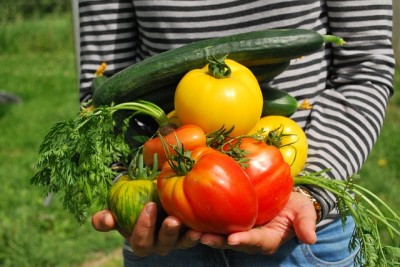|
Listen To The Article
|
It is every gardener’s dream to be able to plant a garden, enjoy its bounty and then collect seeds to grow again in the next season. Growing crops from your very own seeds is quite the achievement.
Beans, lettuce, peas, peppers and tomatoes are considered the easiest to save. They all produce seed in the same season as they are planted and all are self-pollinating. Only the seeds from open-pollinated, non-hybrid plants will produce the same crop.
Your Best Source For Community Garden Non-GMO Seeds Is Right Here!
If this is your first year collecting seeds, congratulations! If you need a little help collecting the seeds, here are some pointers to help you out. Below are common vegetables that are easy to collect seeds from.
Before You Begin
When it comes to drying seeds, do not dry them on paper plates or paper towels. The seeds WILL stick to them and become damaged. Stir the seeds once or twice during the day. As well, it is not a good idea to put seeds in direct sunlight, but using a fan to help dry is OK.
1. Tomatoes
Tomato seeds will be covered in a gel-like substance. You will need to get this off before you dry the seeds. This is done by imitating the fermentation process. It is recommended to do this someplace other than the house, as the smell isn’t the most pleasant.
- Place the seeds in a waterproof container.
- Add an equal amount of water to the size of the seed mass.
- Place mixture out of direct sunlight.
- Stir the seed mixture once a day.
After a couple days, the good and viable seeds will sink. After five days, anything that floats can be considered garbage and thrown away.
- Wash seeds one last time and place them on a screen, glass or plastic plate. Lay them out in a single layer and leave them in a warm area until all the seeds are dry.
Please Note: Tomato seeds will germinate unless you quickly dry them.
2. Peppers
Peppers are considered the easiest crop from which to collect seeds. Their seeds mature after the pepper changes color. This vegetable will have seeds on the central stem of the pepper. Cut the vegetable open and brush off the stem onto a plastic, ceramic or glass plate and let them dry.
3. Squash
Saving seeds from squash is done in a similar method to peppers. Open the vegetable and scrape out the seeds. Wash the seeds and as the water goes over them, rub the seeds with your fingers. This method removes any debris from the seeds. Once again, put them on a plate to dry.
4. Melons
For any type of melon, simply remove seeds and rinse them in water. Rub the seeds as you rinse them to remove any debris and get that sticky feeling off. You can then put the seeds into a container filled with water. As with tomato seeds, the good melon seeds will sink. Once you remove everything that floats, rinse the seeds again. Once rinsed for the last time, lay the seeds out to dry.
Please Note for Squash and Melons: Do not cut straight through the center of the plant, as you will end up cutting the seeds. Cut squash when you are ready to eat it, as it saves it from rotting. Always be careful when cutting, as some melons and squash are difficult to cut.
5. Peas and Beans
These plants have pods and are easy to gather and save. In most cases, when you are picking peas and beans to eat, you’ll pick the pods when they are young and tender. But for the purpose of seed-saving, you’ll want to wait until the pods mature – usually after they turn brown and you can see lumps formed in the pod. Remove pods from the vines, then remove the seeds from the pods. Put seeds in a large container, as you will have to stir them once in a while as they dry. Count on air-drying the peas or beans for six weeks. If the weather threatens the ripe, but not dry plants, you can pull them up and hang the plants upside down in an area that is warm. The seeds will draw from the plants for a few days and still dry.
6. Cucumbers
Cucumber seeds are mature when the cucumber changes color and becomes soft. Pick the cucumber you want for seed-saving at the end of the season.
You can scrape out and rinse off the seeds from a cucumber. Dry the seeds like you would those of a melon.
7. Greens
For radishes, lettuce and other greens, let the seeds dry in their pods on the plant. Once they are dry, “bag the heads” by actually placing a bag over them and retrieving the seeds.
A Note on Storage
Seeds can be stored in any type of container, but need to be settled in a cool and dry area. Seeds can be viable for around 15 years, even longer (some records show 40 years) if you freeze them.
Now, you are ready to enjoy your garden fully. Enjoy the gardening season and prepare for next year by saving your own seeds.
What seed-saving tips would you add to this story? Share them in the section below:
Every Year Gardeners Make This Avoidable Mistake — But You Don’t Have To. Read More Here.
 Off The Grid News Better Ideas For Off The Grid Living
Off The Grid News Better Ideas For Off The Grid Living





